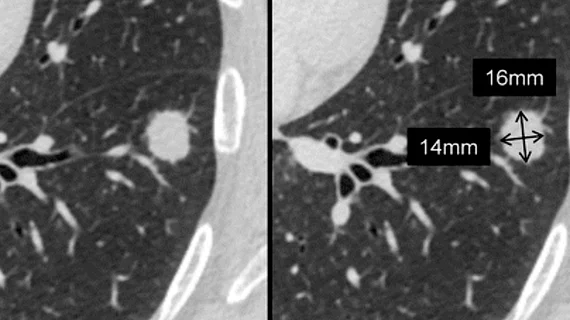American Indian/Alaskan Native tribes three times more likely to get lung or colorectal cancer
The disproportionately high incidence of lung and colorectal cancer among American Indian and Alaskan Native populations was a topic of conversation this week at the American Roentgen Ray Society’s annual meeting.
American Indians (AI) and Alaskan Natives (AN) are three times more likely to develop lung or colorectal cancer than other ethnic groups, according to a scientific e-poster shared at the 2022 ARRS meeting in New Orleans earlier this week. Reasons for these heightened rates, experts shared, can be attributed to income, education, transportation and living in rural areas.
“We recorded the distance to their closest lung, breast, and colorectal cancer screening center and ACR accreditation status, and if the closest location was in or out of state,” submitting author Miguel Pena, of Massachusetts General Hospital in Boston, and co-authors explained.
To achieve this, Pena and colleagues used the Department of Interior’s Bureau of Indian Affairs website, along with the American College of Radiology’s ‘My Computed Tomography Colonography (CTC) Screening Location Finder,’ ‘Lung Cancer Screening (LCS) Locator Tool’ and the FDA’s ‘Mammography Certified Facilities Database.’ Experts searched for screening and cancer centers within a 200 mile radius of the tribes.
Although 76.4% of the populations lived within 200 miles of a lung cancer screening center, only 26.9% of these centers were ACR accredited. For CTC centers, 63.3% of populations were within 200 miles and 46.9% of centers were ACR accredited. Breast cancer screenings were observed to be the most accessible, with 93.7% of populations living within 200 miles of a screening center, 65.5% of which were ACR accredited. The average distances to screening centers ranged from 43.6 to 79.8 miles, with CTC having the lengthiest commutes.
“Distance barriers may perpetuate existing disparities in cancer screening outcomes among AI/AN tribes who face multilevel barriers to care,” the authors commented, before adding that increasing access to screening would improve disease outcomes among these native communities.
Related cancer screening content:
CT colonography screening remains widely underutilized
Stratifying patients by risk of poor outcomes could reduce overtreatment of lung cancer
AI-based mammo screening protocol reduces radiologist workload by 62%
Experts highlight 'suboptimal' rates of CMS-required shared decision making encounters prior to LDCT

